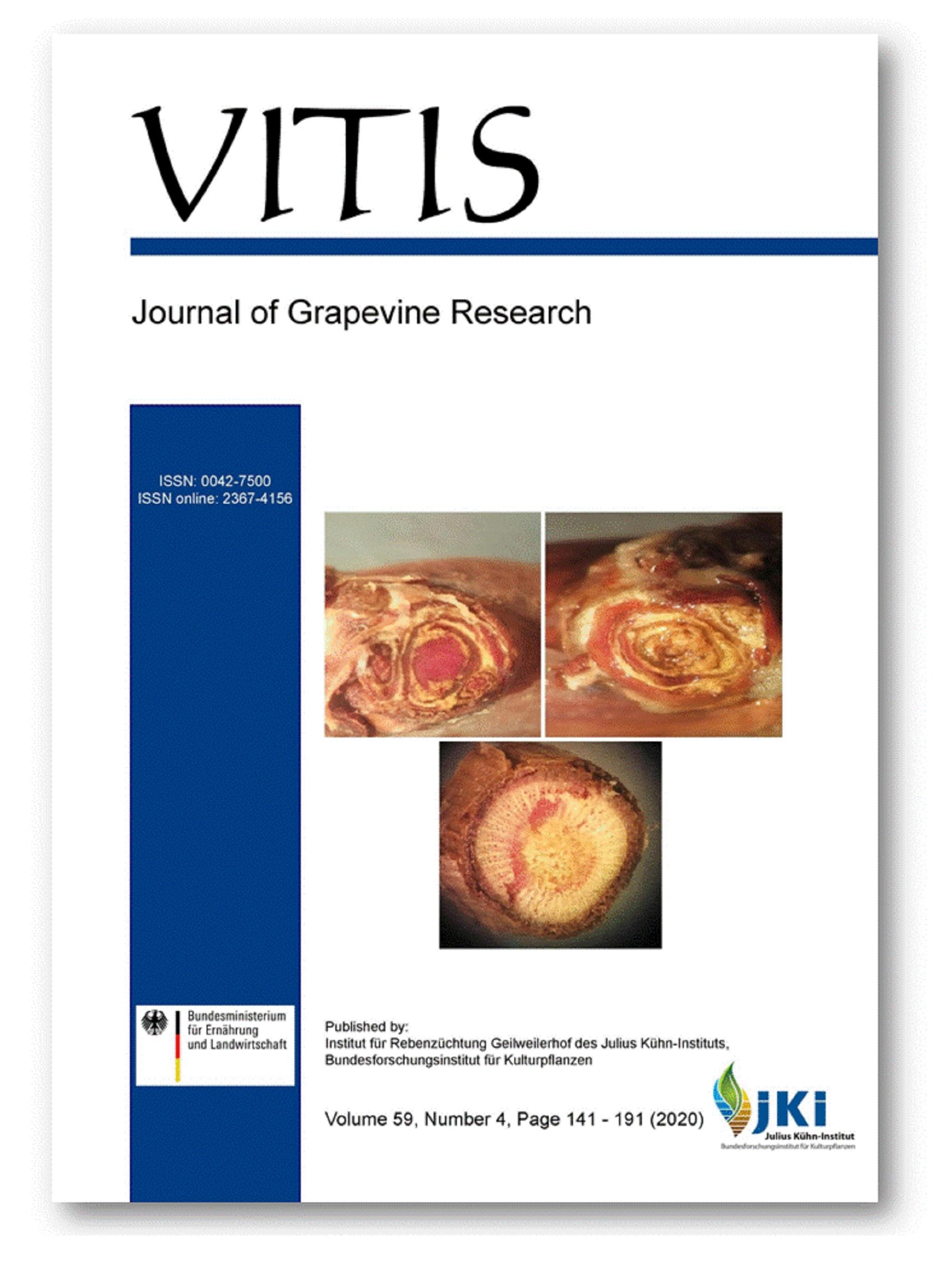Physiological impacts of early defoliation on the cold hardiness of grapevine (Vitis vinifera L.) 'Sultana'
DOI:
https://doi.org/10.5073/vitis.2020.59.141-147Keywords:
abscisic acid; cold hardiness; electrolyte leakage; tetrazolium staining; water contentAbstract
Low winter temperatures are one of the limiting factors of grape production worldwide. This study was undertaken to inquire about the effects of postharvest early defoliation on the cold hardiness of grapevine. The grapevines samples, cv. Sultana, were defoliated at two stages (10 and 25 days after harvest), and then they were compared with natural leaf fall. Cane samples were collected in December 2017 and February 2018, and analyzed in terms of water content, soluble carbohydrate, and proline concentrations in both bud and cane tissues. The samples were then subjected to freezing treatments i. e. -8, -12, -15, -18, -21, and -24 °C for evaluating the levels of cold hardiness. Based on these results, early defoliation reduced proline and soluble carbohydrate concentrations but increased the water content compared to the control. Leaf removal also decreased abscisic acid concentration in the bud samples. Investigation of cold hardiness by electrolyte leakage and tetrazolium staining examinations showed that the defoliation decreased cold hardiness. Results demonstrated that leaf removal between the growing season and the beginning of the acclimation stage decreased the metabolite concentration in buds and canes and resulted to a reduction of cold hardiness.
Downloads
Published
Issue
Section
License
The content of VITIS is published under a Creative Commons Attribution 4.0 license. Any user is free to share and adapt (remix, transform, build upon) the content as long as the original publication is attributed (authors, title, year, journal, issue, pages) and any changes to the original are clearly labeled. We do not prohibit or charge a fee for reuse of published content. The use of general descriptive names, trade names, trademarks, and so forth in any publication herein, even if not specifically indicated, does not imply that these names are not protected by the relevant laws and regulations. The submitting author agrees to these terms on behalf of all co-authors when submitting a manuscript. Please be aware that this license cannot be revoked. All authors retain the copyright on their work and are able to enter into separate, additional contractual arrangements.



